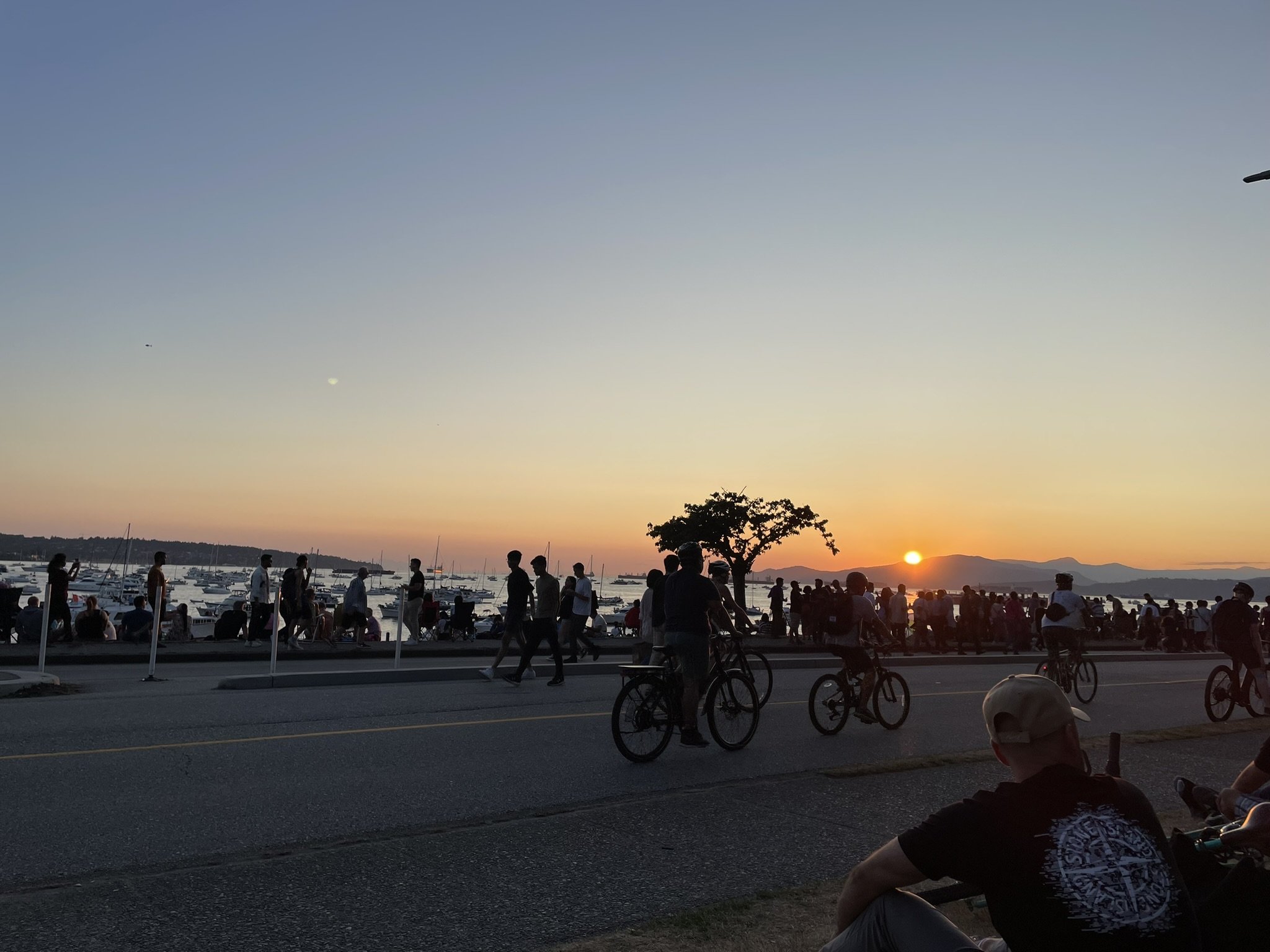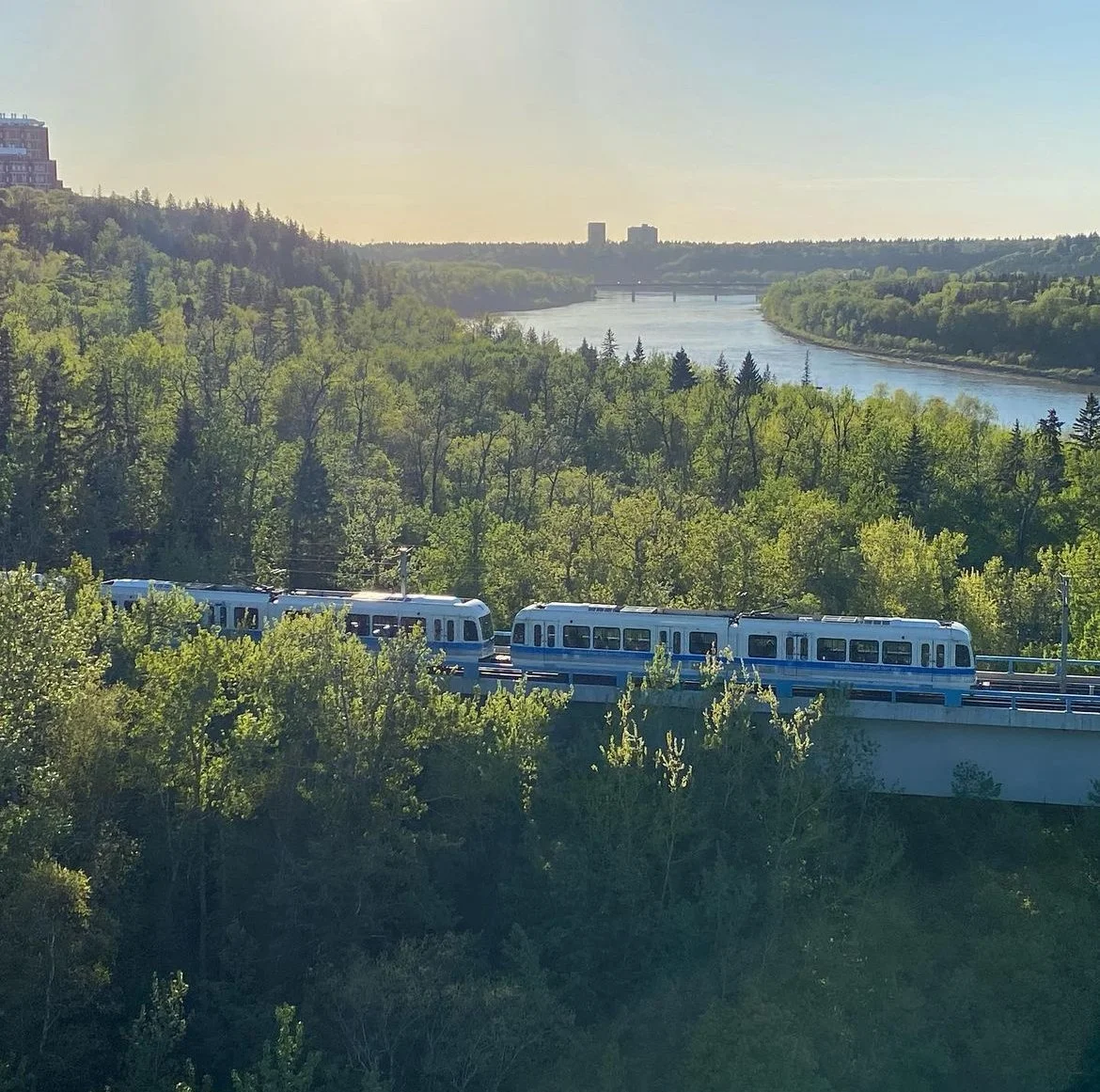Yes In My BackYard (YIMBY)
The "Yes in My Backyard" (YIMBY) blog champions sustainable urban development and housing accessibility, advocating for more inclusive and diverse communities. It highlights successful initiatives, shares personal stories from GAPSS members, and provides resources for engaging in local planning and geography processes. By promoting a constructive dialogue, the blog aims to shift the narrative towards welcoming growth and addressing sustainable practices, ultimately fostering vibrant neighbourhoods where everyone can thrive.

The “Robocops” of Kinshasa
In this YIMBY Post, GAPSS Member Hussain Cochinwala, reflects on the unique "robocop" traffic controllers in Kinshasa, developed by a group of female engineers.
These transformer-like robots, which replace traditional traffic lights, have sparked mixed reactions. While some see them as a superficial symbol of progress, others view them as a valuable tool for safety and reducing corruption.
Drawing inspiration from Kinshasa’s innovative approach, the post encourages urban planners in Canada to embrace creative, culturally reflective infrastructure that adds charm and functionality to everyday street life.

A Tale of Two Cities
In this YIMBY Post, GAPSS Member Raymond Li explores the complex relationship between municipalities and provincial governments in Canada, highlighting recent tensions in Edmonton and Toronto.
With municipalities relying heavily on provincial funding, local leaders like Edmonton’s Amarjeet Sohi and Toronto’s Olivia Chow often find themselves navigating political challenges when advocating for urbanist policies, such as bike lanes or fair property tax payments.
The post underscores the importance of political skill in urban planning, where being “right” is less effective without the ability to communicate and fight for those ideas in the political arena.

Winter Cities in Film; Seeing Myself in Fargo (1996).
In this YIMBY Post, GAPSS VP Marketing Eric Prefontaine, reflects on how the 1996 film Fargo, directed by Joel Coen, unexpectedly resonated with their experience growing up in the Canadian prairies.
While many movies are set in glamorous or iconic locations, Fargo brings the stark, snowy landscapes of Minnesota to life in a way that mirrors the rural and urban settings of Alberta. From winter driving to vast canola fields blanketed in snow, the film captures the essence of prairie life in a way the author had never seen before in cinema.
It’s a powerful reminder that even the most understated environments can feel like home when represented authentically.

Art Deco in The Heart of Detroit’s Inner City
In this YIMBY Post, GAPSS member Vanessa discusses the history of Detroit and her appreciation of the art deco architectural styles characteristic of Detroit's glory days.
While the city is often associated with economic decline and negative media portrayals, Vanessa highlights the beauty and resilience found in its historic buildings. She delves into the legacy of Detroit’s automotive heyday, reflecting on the opulence of its art deco structures, which stand as testament to the city’s past success.
Through a closer look at landmarks like the Guardian Building, Vanessa invites readers to rediscover Detroit’s rich architectural heritage, offering a glimpse into the city’s grandeur and its potential for renewal.

The Botched Privatization of Chicago's Parking Meters
In this YIMBY Post, GAPSS VP Internal Beth Bennett highlights the disastrous 2008 parking meter deal between Chicago and Chicago Parking Meters LLC (CPM).
Amid a financial crisis, Chicago sold a 75-year lease on 36,000 parking meters for $1.156 billion, a deal later found to undervalue the meters by over $1 billion. While CPM investors saw huge profits, Chicago now faces high parking rates and significant challenges in implementing transportation alternatives. The city has also paid millions to "buy back" parking spaces, further complicating urban planning.
This cautionary tale underscores the importance of careful financial decision-making in city governance.

The Campus Which Could Have Been
In this YIMBY post, GAPSS Member Cole Swanson explores the University of Alberta’s architectural charm, highlighted by its century-old buildings that serve as picturesque backdrops for graduation photos and LinkedIn profiles.
The original campus master plan, envisioned by Montréal architects Nobbs and Hyde in 1912, featured a grand design with uniform Beaux-Arts style structures and lush green courtyards. However, historical events such as the World Wars and the Great Depression prevented its full realization, resulting in the diverse architectural landscape seen today.
Despite this, the university still showcases many historically significant buildings, including Pembina Hall, which houses the Faculty of Native Studies. Readers are invited to discover the unique history and beauty of the campus as it stands now.

Reporting Live from the Centre of the Universe: Highways vs Main Streets
In this YIMBY Post, GAPSS Member Robert Brooks discusses a weekend trip to Toronto, highlighting the bustling downtown filled with people despite the cold; noting the threat to the city’s bike lanes due to a fast-tracked bill by the Ontario Progressive Conservatives, which could restrict bike lane installations that reduce vehicle traffic. Mayor Olivia Chow opposes the bill, emphasizing the benefits of bike lanes for local economies and congestion relief.
The post critiques the province's outdated statistics on bike usage and argues that efficient transportation solutions are crucial for accommodating Toronto's growing population amid ongoing congestion issues.

Edmonton’s Urban Form: Towers or Mid-Rise Buildings?
In this YIMBY Post, GAPSS Member Luka Zvonkovic explores how Edmonton is on the brink of a development boom, particularly in its downtown core.
With rising prices across Canadian cities, it's vital to explore the two main types of new projects: High-Rise Towers like Encore Tower, which enhance the skyline but come with environmental and affordability concerns, and Mid-Rise Blocks like Mercury Block, which promote a more human-scale environment and affordability, despite lacking prominence.
Ultimately, while both have their merits, mid-rise developments may better foster community and accessibility.

Embracing Home
In this YIMBY Post, GAPSS Member Mikoto Ikenaga reflects on the idea of "home" as he travels on the Canada Line, exploring how the concept has evolved from a childhood dream to a more complex reality shaped by rising costs and economic pressures.
He highlights the importance of "third places"—spaces outside of home and work where people can connect, relax, and build memories. From cafes to parks and sports stadiums, these places enrich our lives and communities.
As the post concludes, Mikoto embraces the emotional power of these third places, recognizing them as essential for personal connection and well-being in a fast-paced world.

A Journey to Home
In this reflective YIMBY post, GAPSS Member Mikoto Ikenaga explores the essence of home and the journeys people take to reach it, both locally and across vast distances. Flying over the Rockies, he contemplates the experience of arriving at an airport—where emotions run high and connections are made. However, Mikoto also notices a critical gap: the lack of efficient public transit options at many Canadian airports.
While major cities like Toronto and Vancouver boast rail connections to their downtowns, many others struggle with infrequent and costly services.
With new studies underway for potential rail connections in Calgary and Edmonton, there is hope for improved airport transit. As Mikoto waits for the train at YVR, he holds onto the belief that one day, all travellers—whether locals or visitors—will have access to reliable, fast transit options that make the journey home seamless.

In Defense of Park and Rides
In this YIMBY post, GAPSS Member Elise Beaton reflects on her four years of using the Park and Ride system from Sherwood Park to Edmonton, inspired by a recent video from More Than Transit (MTT). While she appreciates the convenience it provides—reducing driving anxiety and allowing me to save on gas—MTT raises important concerns about Park and Rides, including their cost, contribution to car dependency, and limited utility during off-peak hours.
While acknowledging the system's imperfections, Elise concludes that with better planning—such as creating smaller, strategically located Park and Rides—cities can enhance public transportation and accommodate car users effectively.

Anonymous Wikipedia Editors vs. Edmonton: The Dead Mall List Debacle
In this YIMBY post, GAPSS member Raymond Li explores Edmonton's presence on the Wikipedia page for dead malls, and highlights the surprising concentration of high-vacancy malls in Alberta—particularly in Edmonton, which boasts five entries.
Delving into the historical significance of malls like Westmount Centre and the cultural context of shopping in a cold climate, the post questions why Edmonton is so heavily represented on this list. Through personal anecdotes about City Centre, Northgate Centre, and Westmount Centre, the Raymond critiques the stark realities of these spaces while acknowledging their roles in urban life.
Ultimately, they argue that despite Edmonton's representation, other cities likely face greater challenges with dead malls, offering a touch of humor and camaraderie for local readers.

A Love Letter to the Edmonton LRT
In this YIMBY post, "A Love Letter to the Edmonton LRT”, GAPSS member Luka Zvonkovic reflects on a lifelong passion for trains and how the Edmonton Light Rail Transit system shaped their urban planning journey.
Through nostalgic memories of LRT rides, the post explores the sensory experiences of traveling through the city—its changing landscapes, the thrill of the journey, and the simple joys of observing the world from the train window.
Despite its imperfections, the LRT remains a source of comfort and inspiration, reminding the Luka of the beauty in everyday commutes and the deep connection to a passion for railways.

The Edmonton Rat-Hole: Gone but not Forgotten.
In this YIMBY post, GAPSS VP Internal Beth Bennett, reflects on the transformation of Downtown Edmonton over the past 25 years, particularly highlighting the development of the new Ice District.
Once an industrial area filled with rail yards, downtown has shifted to an entertainment hub, but this change came at the cost of losing the iconic “Rat-Hole,” or 109 Street Tunnel.
Although it was ultimately closed in 2000 to make way for a new roadway—an undeniable improvement—it still holds a nostalgic place in the hearts of many. Inspired by a video from Lincoln Ho of YEGVentures, I invite readers to remember the Rat-Hole and its whimsical legacy as they travel along 109 Street. R.I.P. Rat-Hole.

Embracing Change: The Significance of Wîhkwêntôwin on National Day of Truth and Reconciliation
In this YIMBY Post, GAPSS VP External, Rylee Thomson explore's Edmonton's top neighborhood choice, Wîhkwêntôwin, which translates to "Circle of Friends" and symbolizes inclusion and diversity.
This significant renaming marks a step toward reconciliation, shedding the colonial legacy of its former name, Oliver, linked to exploitative policies against Indigenous peoples.
As we reflect on the National Day for Truth and Reconciliation, we delve into the community's journey and the ongoing efforts to address the colonial history of Edmonton.

The Cautionary Tale of Liberty Village
In our first YIMBY blog post, GAPSS Member Robert Brooks, reflects on his experiences living in Toronto's Liberty Village during his undergraduate days.
Initially touted as an exciting urban hotspot, he found the neighbourhood plagued by accessibility issues, including long walks under railway overpasses and chaotic parking lots.
With a future subway line still years away, Liberty Village has become a quintessential example of car-oriented urban planning gone wrong.

